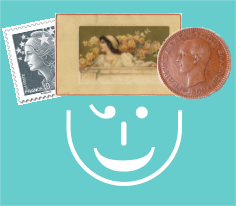Bonjour.
Sans être particulièrement connaisseur, j'ai des pistes pour toi.
-Le gris est un fiscal ottoman pour journaux et affiches, d'où l'oblitération typo, de 1875 (une rotation de 180° pour le mettre dans le bon sens)
-le surchargé est de la série courante de 1876 (Y&T n°39)
-le 2 k brun matérialise la taxe fiscale sur les journaux étrangers entrant en Autriche. (deux types existent, un scan sur les têtes d'aigle bicéphale?)La taxe était perçue par le bureau distributeur.
Reste à trouver les textes et tarifs étayant tout ça...
Norbert.
Edit:
pour la taxe autrichienne:
"Initially, payment of the tax was shown by a "signet" imprinted by hand or as part of the printing process. The 1789-1791 version is extremely rare; between 1792 and 1803 the tax was in abeyance.
In 1803 the tax was reimposed, and from then till 1854 the signet's design was changed annually (this is 1813, 1 Kr value, used at Graz). The tax on foreign newspapers was usually twice that on inland newspapers; however, newspapers from certain countries ordered by advance subscription through the Post Office were taxed at the inland rate (which at times eg 1851-1857 was zero). Although this was a revenue tax, much of the detail was handled by the Post Office.
From 1 March 1853, adhesives were introduced as an alternative way of paying the tax. There were 4 issues: "arms in frame" designs in 1853, 1858/9, and 1877, and a "medallion" design in 1890. These adhesives are found cancelled by a wide variety of Post-, Tax- and Customs-office cancels; but were often applied to the newspaper sheet before printing so as to be "cancelled" by the print. A 25 Kr perforated adhesive was introduced in 1890, to facilitate paying the tax on a weekly journal bound into a half-yearly volume......
.....The Newspaper Tax was finally abolished on 1 Jan 1900."
(sur "austrianphilately.com d'après un article d'Andy Taylor dans "A celebration of Austrian philately" édité par l'Austrian philatelic Society (APS)
